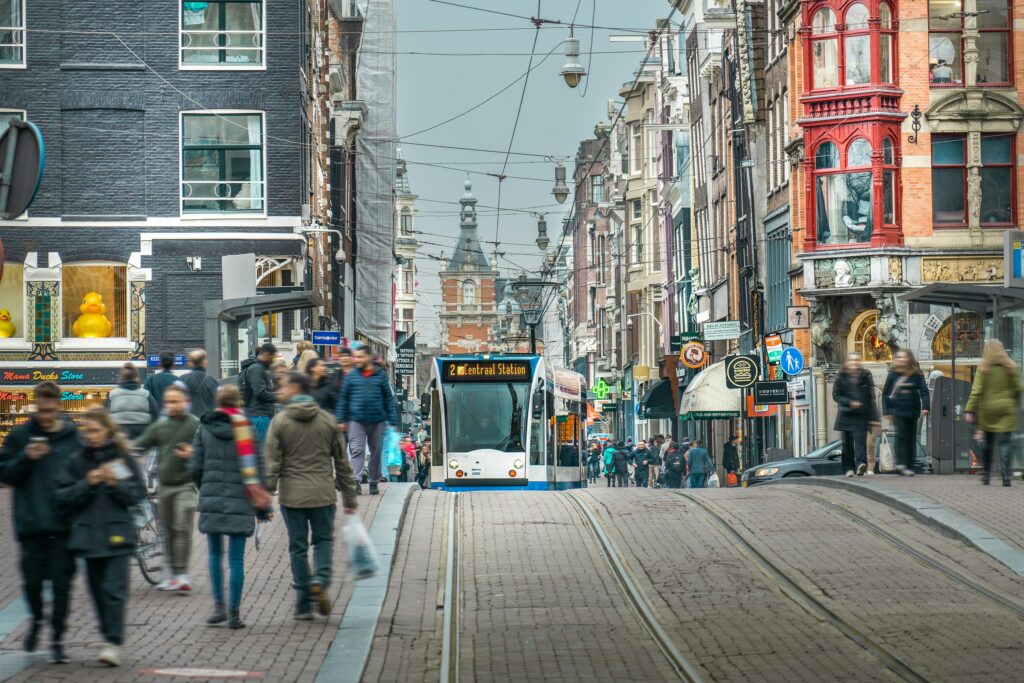The global trend of urbanization, combined with significant demographic shifts, is reshaping markets across the world. By 2050, 68% of the global population will reside in urban areas, with the majority of this growth occurring in Asia and Africa. Understanding the market impact of demographic shifts is essential for businesses aiming to adapt and thrive. At Innovation Is Everywhere, we offer insights through our innovation reports and learning expeditions, helping businesses navigate these transformative changes and capitalize on emerging opportunities.
Market impact of demographic shifts in Asia
Asia, home to 60% of the global population, is experiencing rapid urban expansion. Despite a stabilized population growth rate of 0.6%, Asian cities are growing at unprecedented rates, with over 55% of the population expected to be urban by 2030. The sheer scale of urban expansion is unprecedented, and cities across Asia are increasingly focused on sustainable solutions to manage this growth.
In India, the Smart Cities Mission launched by the government aims to develop 100 cities across the country that are sustainable, resilient, and equipped with modern infrastructure. One example is Pune, where the Smart Cities initiative has led to the implementation of smart energy management systems, waste-to-energy projects, and the promotion of electric vehicles. Pune’s Zero Waste Campaign focuses on reducing the city’s landfill waste by encouraging recycling and composting, turning waste management into a resource-efficient process. The city has also implemented intelligent traffic management systems to reduce congestion, a growing problem as more people migrate to urban areas.
Singapore, the city-state known for its forward-thinking urban planning, has embraced the concept of a smart city, integrating technology and sustainability into its infrastructure. The Green Mark Scheme, introduced by the Building and Construction Authority (BCA), incentivizes developers to create eco-friendly buildings that reduce energy consumption, water usage, and waste. Additionally, Singapore has invested heavily in smart grid technology, which optimizes energy distribution and consumption across the city.
In China, urbanization is advancing at a staggering pace, with cities like Shenzhen leading the way in sustainable development. Shenzhen, often referred to as China’s “Silicon Valley,” has implemented a comprehensive strategy to reduce its carbon footprint while accommodating its growing population. The city has transitioned to an all-electric public transportation system, making it the first city in the world to electrify its entire bus fleet.
The market impact of these demographic shifts in Asia is profound. As cities grow, so does the demand for sustainable infrastructure, energy, and housing solutions. Companies that can offer innovative products and services that align with these trends are well-positioned to succeed in the region.
Market impact of demographic shifts in Africa: addressing rapid urbanization
Africa is set to become the most populous continent by 2100, with an annual population growth rate of 2.3%. Cities like Lagos, Nigeria, exemplify the challenges and opportunities presented by this urban explosion.
To address the infrastructure challenges posed by such growth, the Nigerian government has launched the National Mass Metering Program, which aims to enhance energy efficiency and transparency. The program is responsible for the distribution of electricity meters to consumers, to prevent estimated billing practices. It also focuses on extending the electricity grid to underserved communities, enhancing energy inclusion and accessibility. The Eko Atlantic Project is another good example of an ambitious urban development project Eko Atlantic is a new city being built on reclaimed land along the coast, designed to accommodate over 250,000 residents and provide employment for an additional 150,000 people. The project incorporates modern infrastructure, energy-efficient buildings, and sustainable transport systems, positioning it as a model for future urban developments in Africa.
Market impact of demographic shifts in Europe and Japan: aging populations and business opportunities

The demographic aging of Europe and Japan has catalyzed the growth of the silver economy, a rapidly expanding market focused on addressing the unique needs of older adults. As the proportion of the population over 50 continues to rise, this sector is becoming increasingly influential, driving innovation and creating new business opportunities across various industries.
Credit: Jakub Zerdzicki
More than a challenge, this demographic shift is a massive business opportunity. The rise of the silver economy—the market dedicated to catering to the needs of the aging population—has sparked innovation across various sectors.
In Europe, the silver economy has seen significant advancements, particularly in the healthcare and technology sectors. One key player in Europe is Caresyntax, a German-based startup that has developed surgical analytics and risk management platforms. While not exclusively focused on the elderly, Caresyntax’s technologies are increasingly used in hospitals and care facilities to improve outcomes for older patients undergoing surgery. In the housing sector, Humanitas, a Dutch organization, has pioneered innovative senior living solutions that emphasize community and intergenerational interaction. Their model integrates younger generations into senior living environments, creating vibrant, supportive communities where elderly residents can enjoy a higher quality of life.
In Japan, where the aging population is one of the most pronounced globally, the silver economy is driving technological innovation at an unprecedented pace. Panasonic is at the forefront with its advanced home healthcare solutions. The company has developed robotic beds that seamlessly transform into wheelchairs, enabling greater mobility for elderly individuals who require assistance. These products are part of a broader trend in Japan where robotics and automation are increasingly integrated into elderly care to compensate for the shortage of caregivers. Another significant development in Japan’s silver economy is in the financial services sector. Companies like Nikkei are offering financial products tailored to the needs of an aging population. These include investment vehicles designed to provide steady income streams during retirement and insurance products that cover long-term care costs. Additionally, Mitsubishi UFJ Financial Group (MUFG) has introduced services that help seniors manage their finances more effectively, including tools for estate planning and wealth management tailored to the unique circumstances of older adults.
Market impact of demographic shifts in The Global South: mobility challenges
As cities in the Global South continue to expand, demographic shifts are intensifying mobility challenges, particularly in rapidly urbanizing areas. For example, in Jakarta, severe road congestion is a daily struggle for millions of commuters, reflecting a broader trend across many burgeoning metropolises. The pressure on existing infrastructure is growing, with increased vehicle use contributing to both traffic jams and rising pollution levels.
This situation highlights the necessity for sustainable mobility solutions that can simultaneously alleviate congestion and pollution. Cities are beginning to look towards solutions like electric mobility, which reduces reliance on fossil fuels and lowers emissions, and bike-sharing programs, which offer an efficient, low-impact alternative for short-distance travel. Implementing such solutions requires collaboration between public and private sectors, investment in new technologies, and a willingness to rethink traditional urban planning models.
Navigating the market impact of demographic shifts: how Innovation Is Everywhere can help your business
At Innovation Is Everywhere, we empower businesses not just to navigate, but capitalize on the market impact of demographic shifts. Our Learning Expeditions take you directly into the heart of the world’s most innovative ecosystems, providing firsthand insights into how different countries and cities are tackling urbanization and demographic challenges.
By joining our expeditions, you’ll have the unique opportunity to see how leading companies and startups are turning these global trends into new market opportunities. You’ll connect with thought leaders, explore cutting-edge solutions, and gain actionable strategies to drive growth and innovation within your own business.
Whether you’re looking to penetrate new markets or future-proof your strategy, our Learning Expeditions are your gateway to staying ahead in a rapidly changing world.
Harness the Impact of Demographic Shifts
Demographic changes are more than just numbers—they’re a driving force for market evolution and business growth. Stay ahead to maintain your competitive edge in a rapidly changing world.

